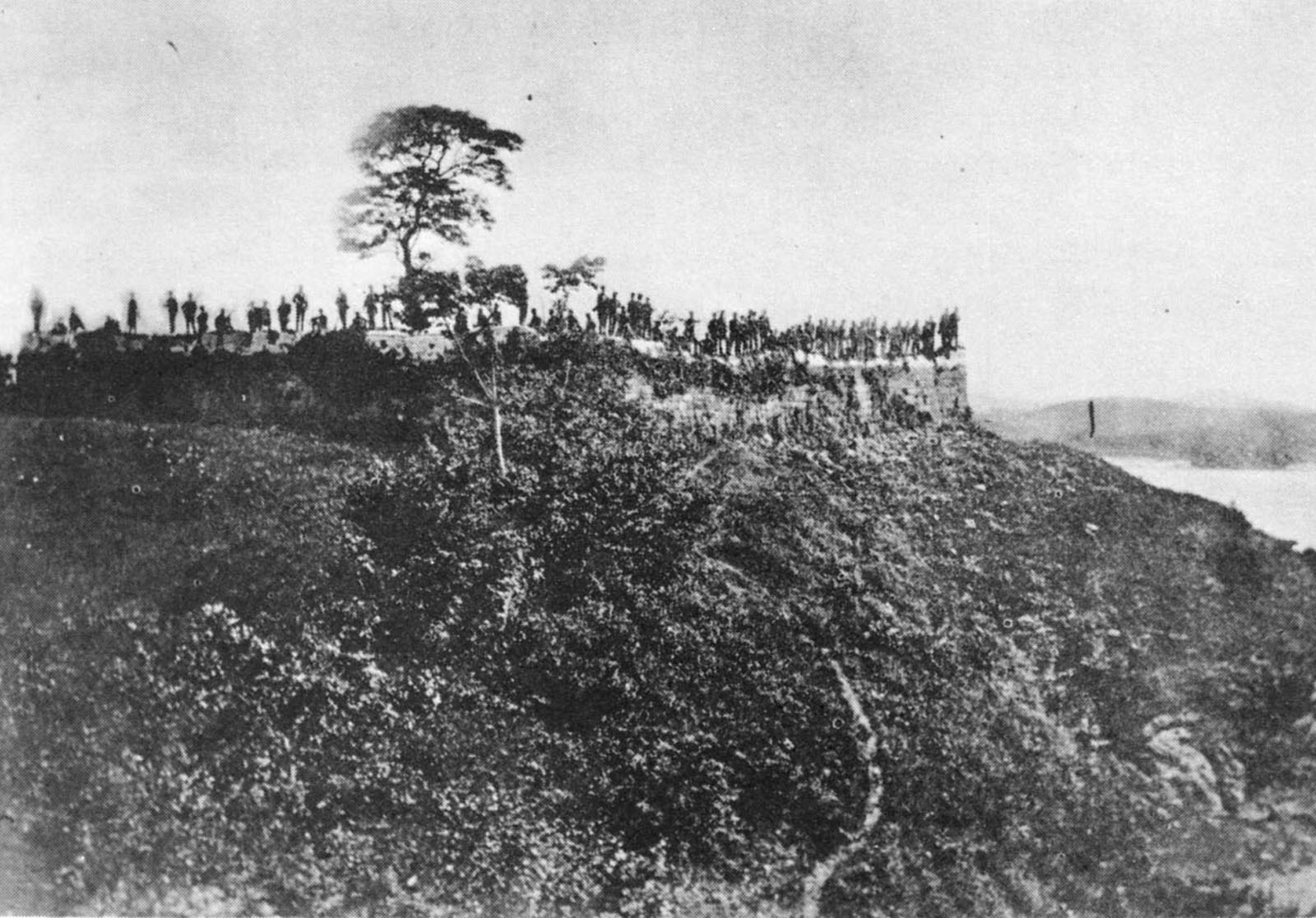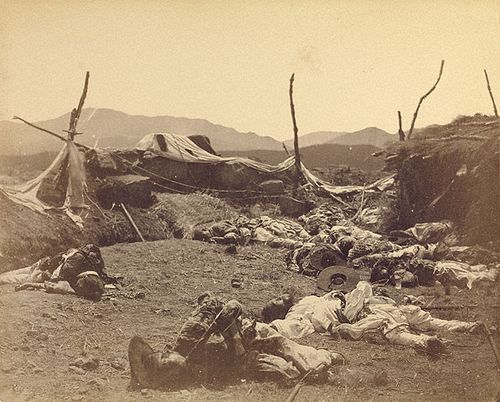Back in the late Fall, we did a day trip out to Ganghwa Do (Island), about an hour's drive northwest of Seoul. Separated from the mainland (the Gimpo Peninsula) by a narrow channel, it sits in the Han River estuary. Just across the main channel of the Han from Ganghwa Do is North Korea.

Ganghwa Island is largely rural and a nice little escape from the hustle and bustle of Seoul. Besides the farms and a bevy of seafood restaurants supporting the local fishing industry (especially blue crab), it is known for hiking and history. We were unable to check out the hiking because we had the two dogs. We had called ahead to make sure we would be able to take the dogs on the trails of one of the island's mountainous parks and were told dogs were fine, only to be turned away at the park entrance because our dogs were "too big." Striking out with the hiking options, we tried to make the best of the trip by focusing on the island's history. Because of its location, Ganghwa was an ideal place for fortifications protecting Seoul in the days of sailing ships and cannons, and there are remnants of those defenses dotting the island. We explored a few of those and also visited the Odusan Unification Observatory for a peek into North Korea.
Odu Dondae ("Outpost"). There were several of these outposts scattered along the banks and bluffs above the Han River. This particular one was first built in 1679, although the structure pictured below is a restoration.
Gwangseongbo Fort. Originally built in 1658, this was the main fortress protecting Seoul from invaders and raiders sailing up the Han River. The fort defended against raids by the French (1866) and Japanese (1875), as well as a bloody American punitive expedition in 1871. Most of the historical commentary at the site focused on the American attack, which the Koreans call “Shinmiyangyo,” or "the Western Disturbance in the Shinmi Year."
In June of 1871, an American naval force consisting of five warships approached Ganghwa for the purposes of finding out the fate of an American merchant ship called the General Sherman, which disappeared outside Pyongyang in 1866, establishing a treaty assuring aid for shipwrecked sailors, and to support an American diplomatic delegation sent to establish trade and political relations with Korea, which had resisted all such attempts by foreign countries up that point. Placards at the site of the fort today note that the American expedition came to "urge Korea to accept other countries culture and trade." In what probably should have been expected, the American ships were fired upon when the approached the island. In response, the US admiral in charge demanded an apology within 10 days. Upon receiving no such apology from the Jeonsan (Chosun) Dynasty government, he decided to launch a punitive raid with about 650 sailors and marines who landed and captured several forts, including Gwangseongbo, and killed about 350 poorly armed Koreans with the loss of three men killed and about a dozen wounded. This was the first time the US flag was raised on Asian soil, and the Americans hung around until early July before leaving for China. Still, the mission could not be called a success because the Koreans refused to negotiate. It was only after the Japanese pressured the Koreans in 1875-76 that the Korean government began to open up; a 14-article treaty with the US was signed in 1882 establishing, among other things, mutual friendship and most favored nation trade status. It lasted until Korea was annexed by Japan in 1910.


 |
| Remember what I said about poorly armed? These cannons were ancient and hopelessly outclassed by 1871. Most of the Korean troops were armed with matchlock muskets. US forces, having recently fought the Civil War, were armed with modern heavy weapons and small arms such as Remington rolling block carbines. Thus, the outcome was never really in doubt. |
 |
| Cemetery were many of the Korean soldiers, most of them unknown, are buried. |
 |
| Commanding view over a bend in the Han River. |
 |
| Restored fort and the position from which the previous photo was taken. |
 |
| Same fort photographed during the American expedition. |
 |
| After the battle. Thought to be the same position in the previous photographs. |
 |
| Memorials to some of the Korean dead, including their commander, a general officer. 15 (!) Americans won the Medal of Honor during the short fight. They were the first Americans to win the medal for combat on foreign soil. |
Oepo-ri
Over on the western side of the island is the small village of Oepo, which seemed like a good place to stop for lunch. Indeed it was. The seafood was great and the neat village and its surroundings offered a nice opportunity to walk off lunch.
 |
| Our lunch stop. |
 |
| The bowl of seafood soup was great, although we seemed a bit out of place with the locals who all seemed to be retired. |
 |
| On a small hill sitting just above the village along the river is this small fort. |
 |
| The village is a port and the launching point for trips to the smaller western islands. It makes for a nice place for photos as well. |
 |
| Village park. |
 |
| Sleepy village. It appeared to be a great place for a weekend escape from Seoul. |
Odusan Unification Observatory
Back in the 1990s when T first came to Korea and came out to Ganghwa-Do, this part of the island was off-limits to tourists. Since that time the observatory has been built and become a very popular tourist site, offering a chance to look inside North Korea. It is not Panmunjom, but still worth the visit.
 |
| Looking straight across the river into North Korea. The observatory offered high-powered binoculars with which to check out the details on the other side. There wasn't much happening over there. We saw a few people working in the fields or walking along the dirt roads, but no automobiles or machinery to speak of. The villages looked quiet, almost deserted, and all the buildings were whitewashed. |
 |
| Looking west. |
 |
| And east, towards the North Korean city of Kaesong, which was faintly visible off in the left distance. |
 |
| Monuments to peace and reunification. |



























No comments:
Post a Comment